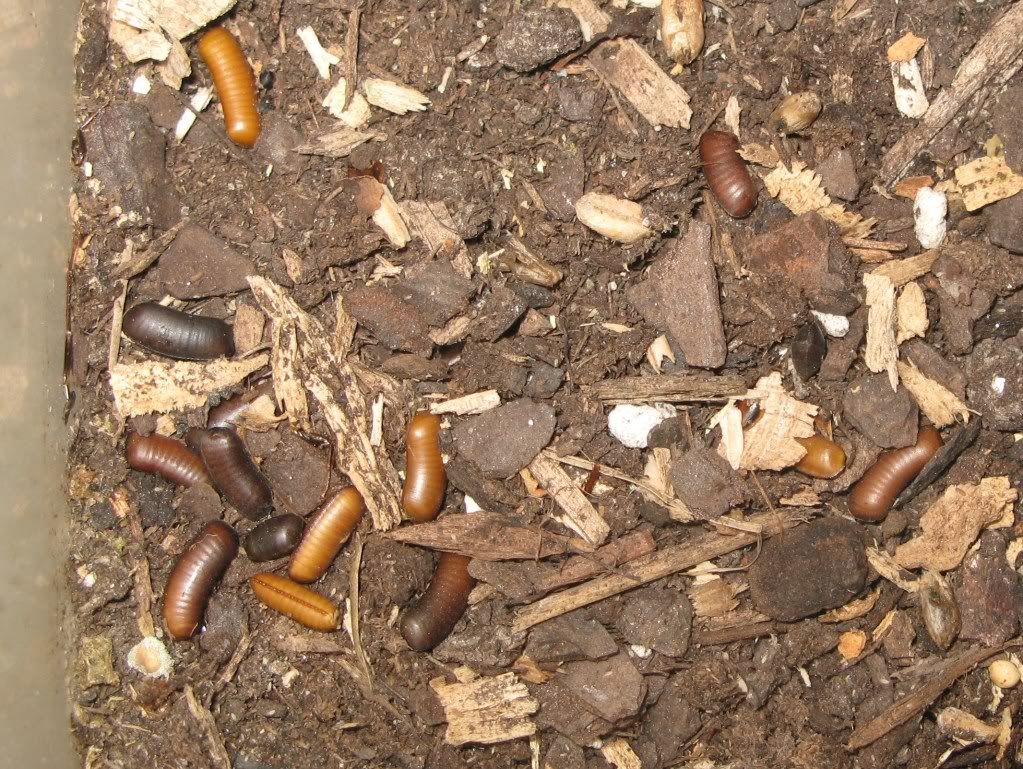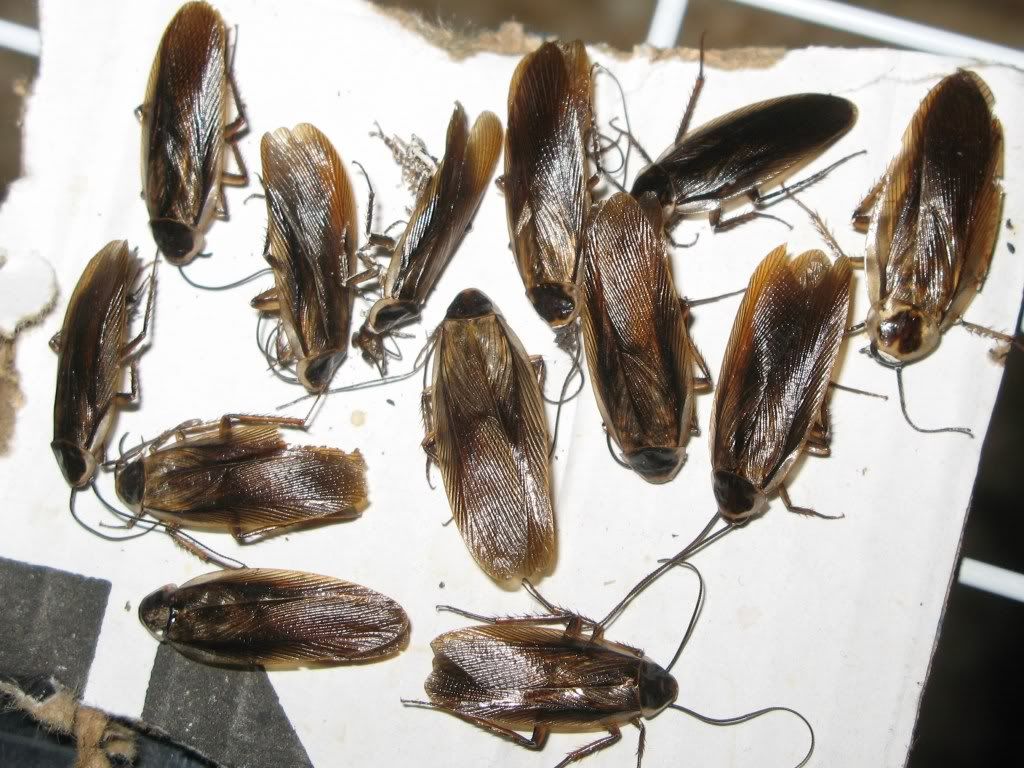Guest viewing limit reached
- You have reached the maximum number of guest views allowed
- Please register below to remove this limitation
- Already a member? Click here to login
You are using an out of date browser. It may not display this or other websites correctly.
You should upgrade or use an alternative browser.
You should upgrade or use an alternative browser.
Photoshoot!
- Thread starter Vulgaris
- Start date
Vulgaris
Fifth Instar
Home for spring break. The roaches are seriously too much for the size of enclosure. They can't possibly keep multiplying with that high of a pop density. There are plenty of orange females and males, so they have their own population too
There are various colors of oothecae that I can see buried in the bottom
Here is the female that I found in my spare room a while back. she has matured and is larger than all the other females. The wings are also shaped differently
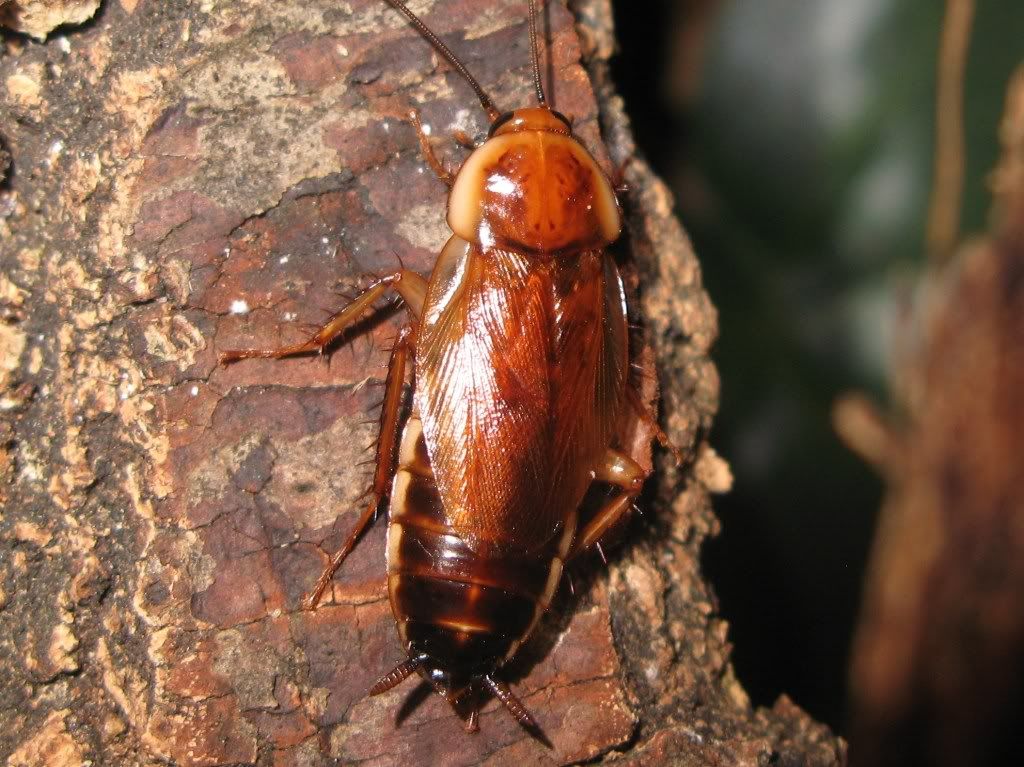
There are various colors of oothecae that I can see buried in the bottom
Here is the female that I found in my spare room a while back. she has matured and is larger than all the other females. The wings are also shaped differently

Last edited by a moderator:
Interesting. My females from Tennessee have fairly long wings. Maybe the further south you go the longer the wings?Your females have such long wings! My ladies' wings are nowhere near that long.
A female I found around here had short wings...
I am glad to know that, I have an Anolis equestris who probably doesn't know what she is missing. :lol: I hope that she won't have to wait long, My small colony of Discoids has yet to reproduce, but hopefully soon I will have alot more sent my way. Then it will be on. :lol: It is too bad that she only has one eye, I found her with a smashed head on October 1, 2010.Anoles are like cockroach prison guards.
Vulgaris
Fifth Instar
More pics while I am home! 
I'm sure you hate to hear it, but I have been feeding off a few males each day. There are just so many of them that it is probably healthy for the colony to get rid of a few
Both species are reproducing, and there are still plenty of nymphs!
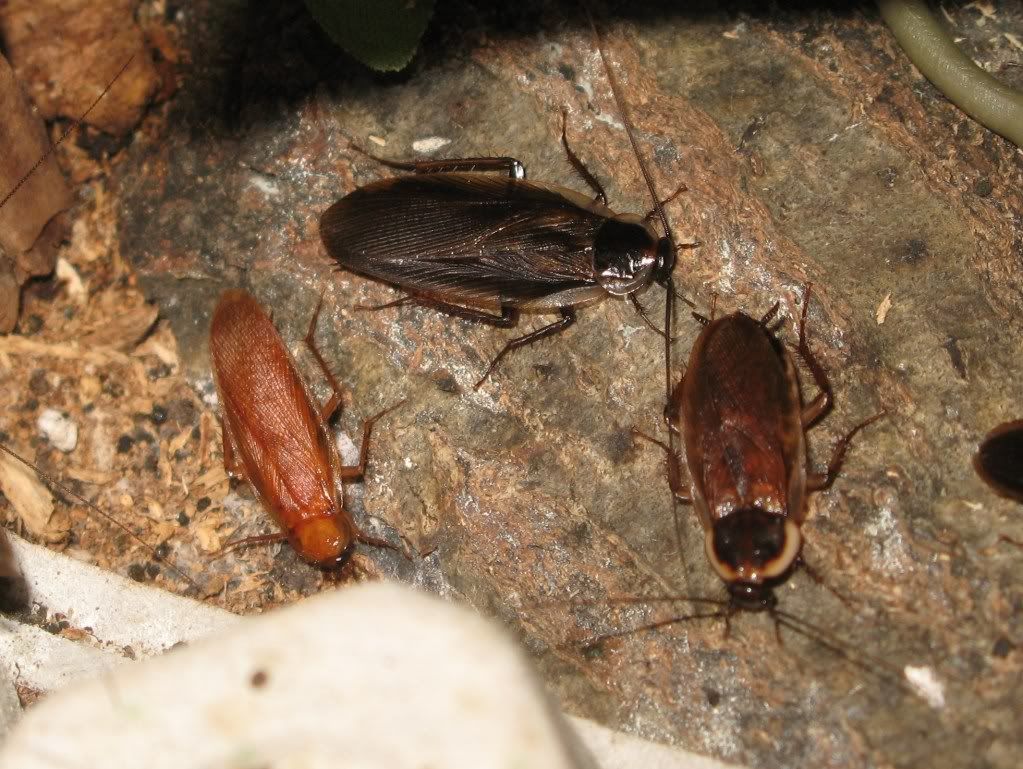
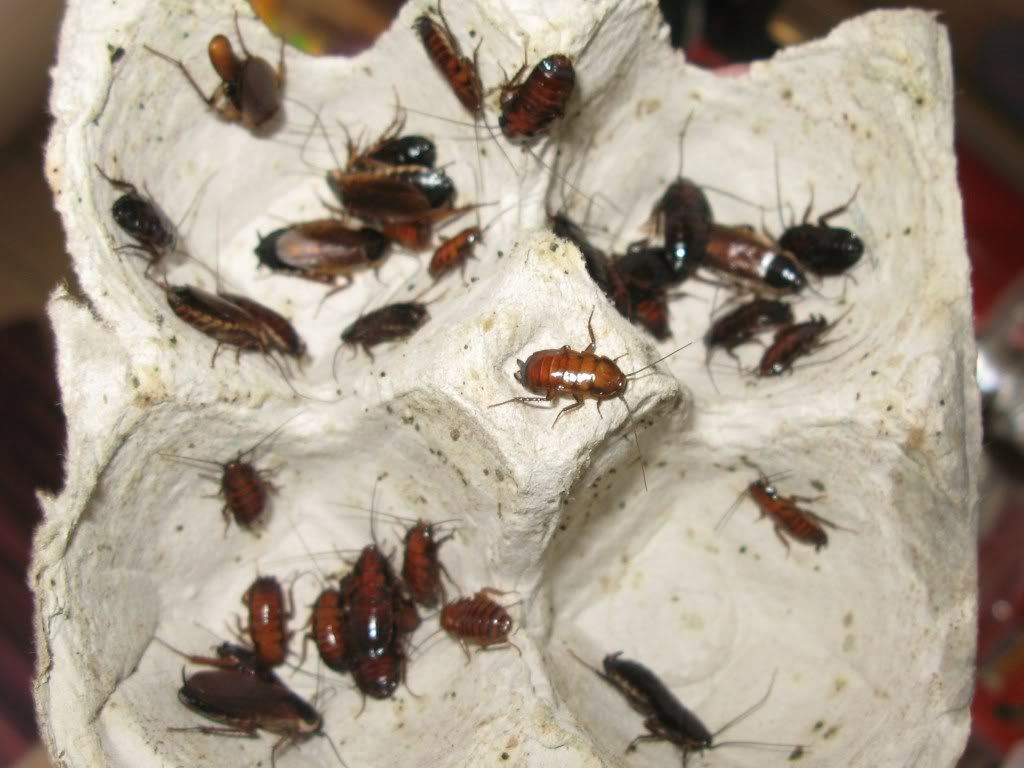
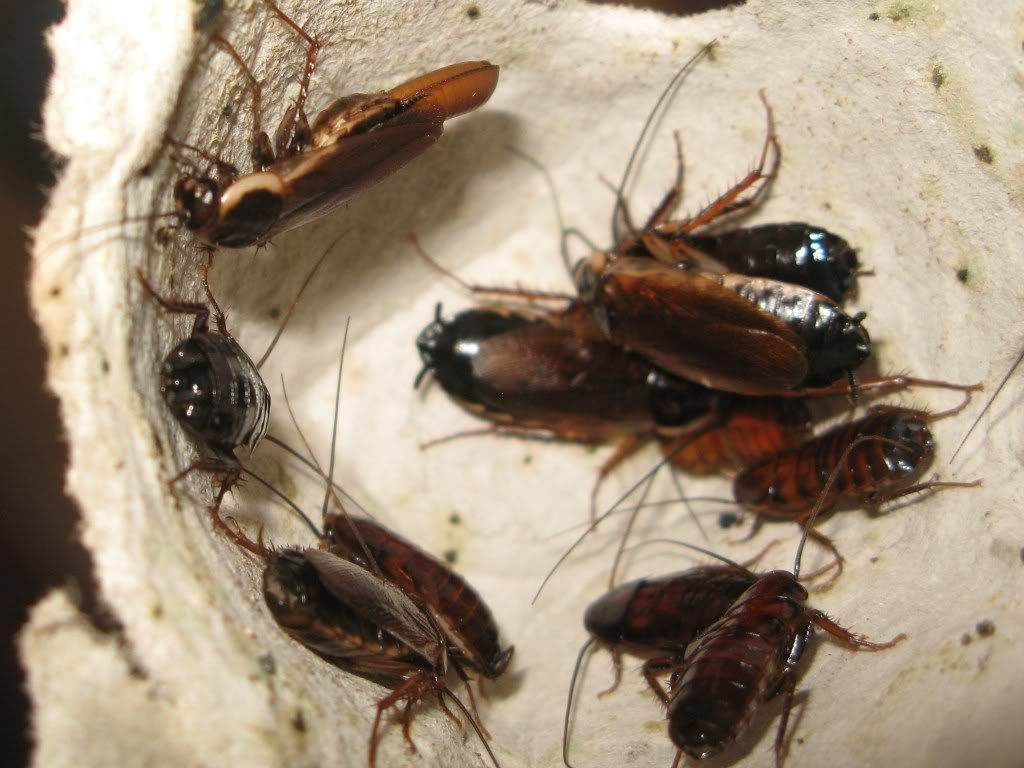
Here is a male and female of the orange variety. The female has an ootheca
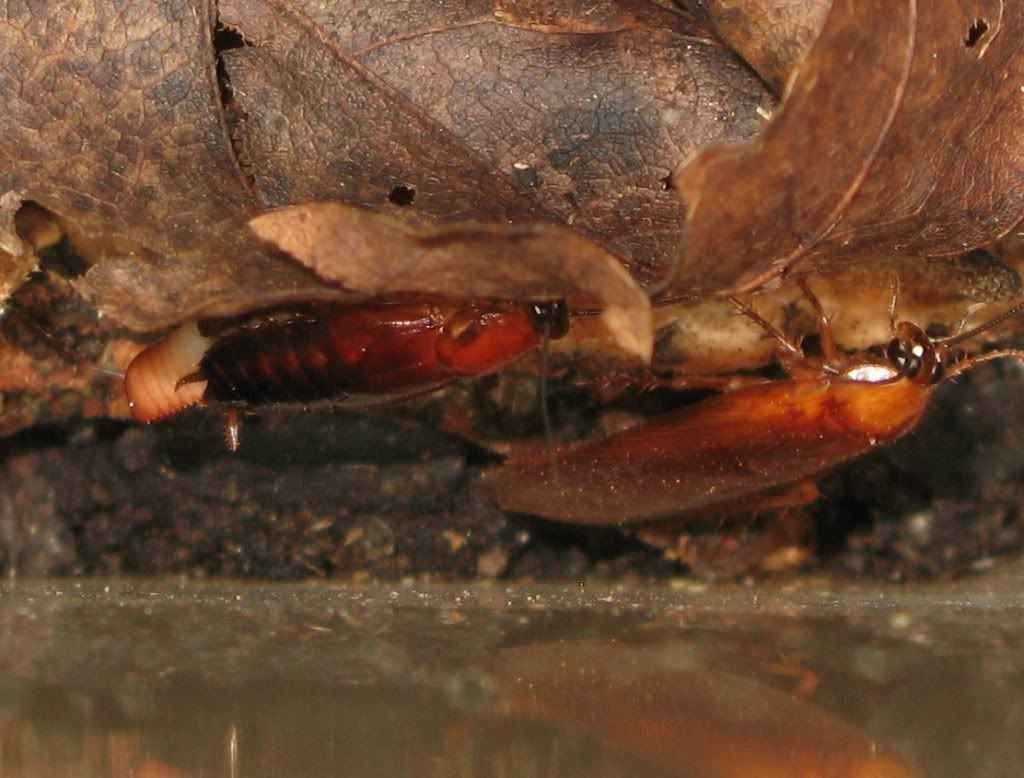
I'm sure you hate to hear it, but I have been feeding off a few males each day. There are just so many of them that it is probably healthy for the colony to get rid of a few
Both species are reproducing, and there are still plenty of nymphs!



Here is a male and female of the orange variety. The female has an ootheca

Vulgaris
Fifth Instar
I got to check on the colony today. All the males are now gone. There are just females, nymphs, and hatchlings left now. Yes, I did see some new born nymphs in the tank!! woo! And the bottom of the cage is littered with all different kinds of oothecae.
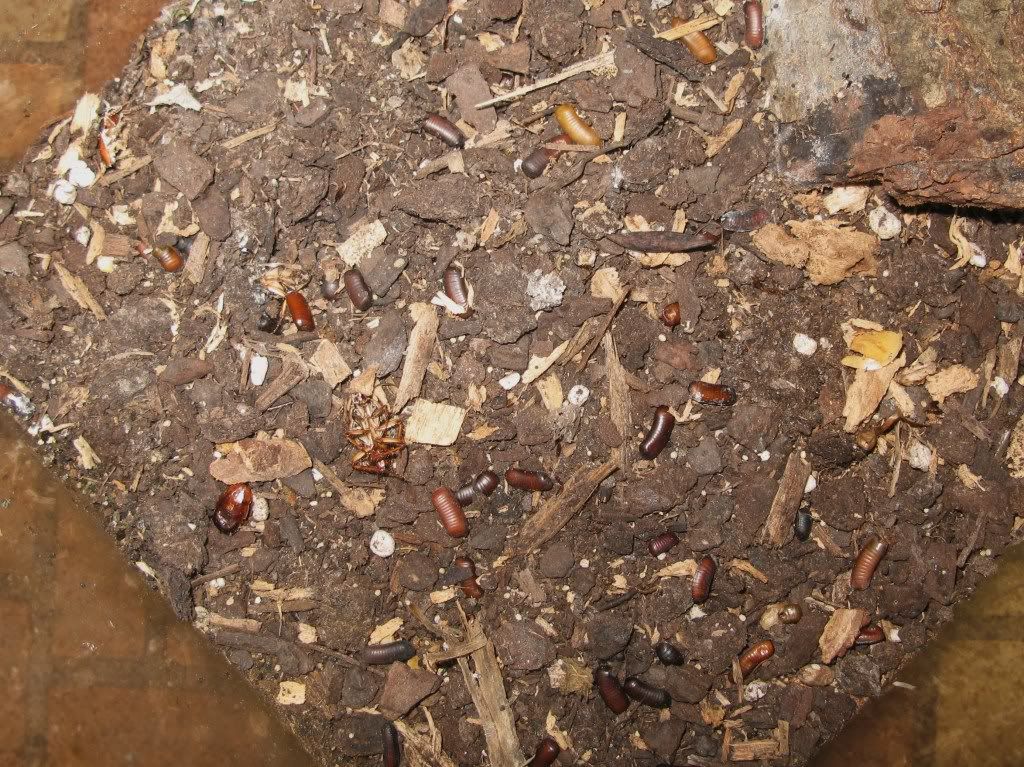
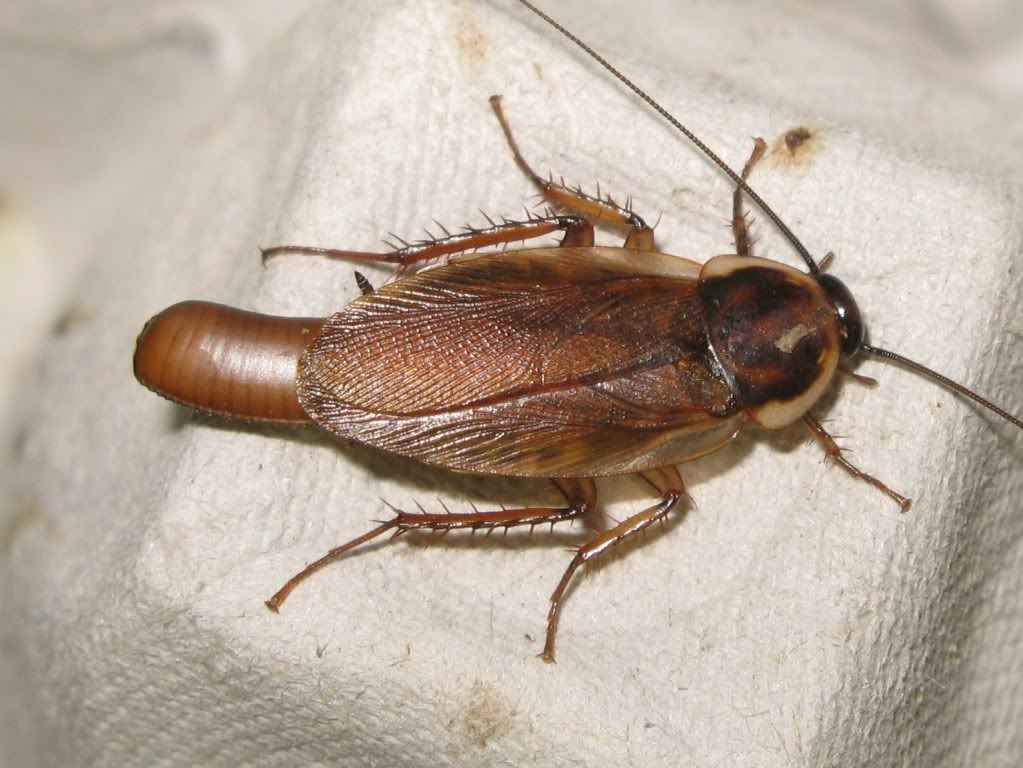
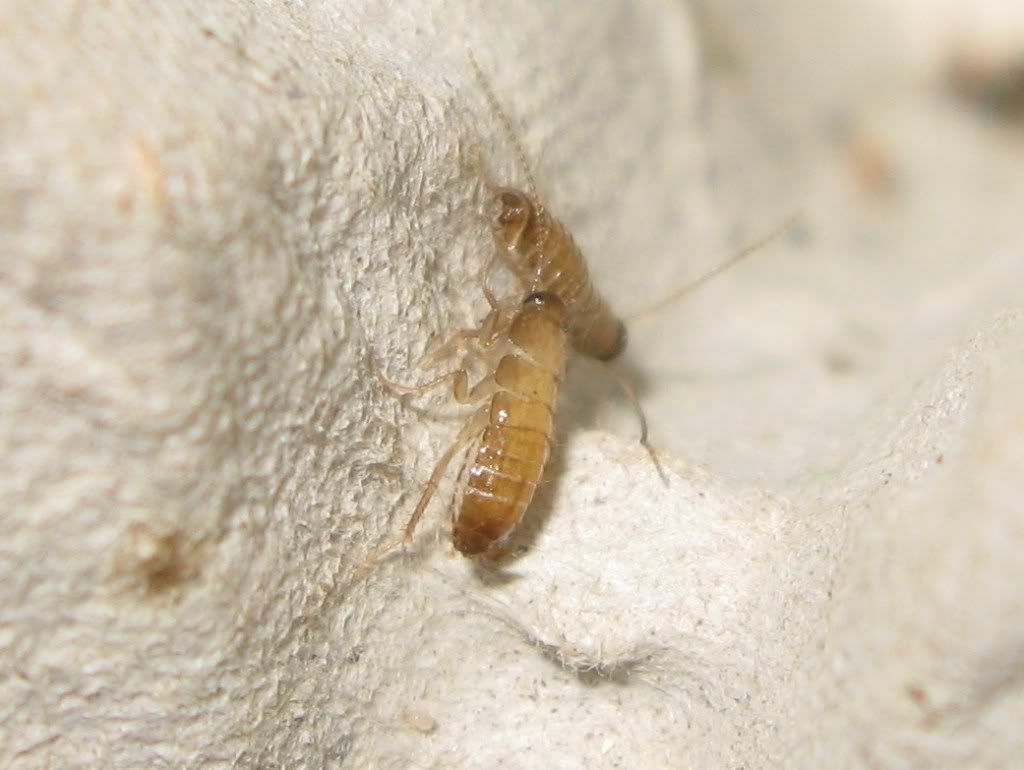
And here are 3 different females which happened to be together for a good photo. There is still another kind of orange one in there which I havn't photographed
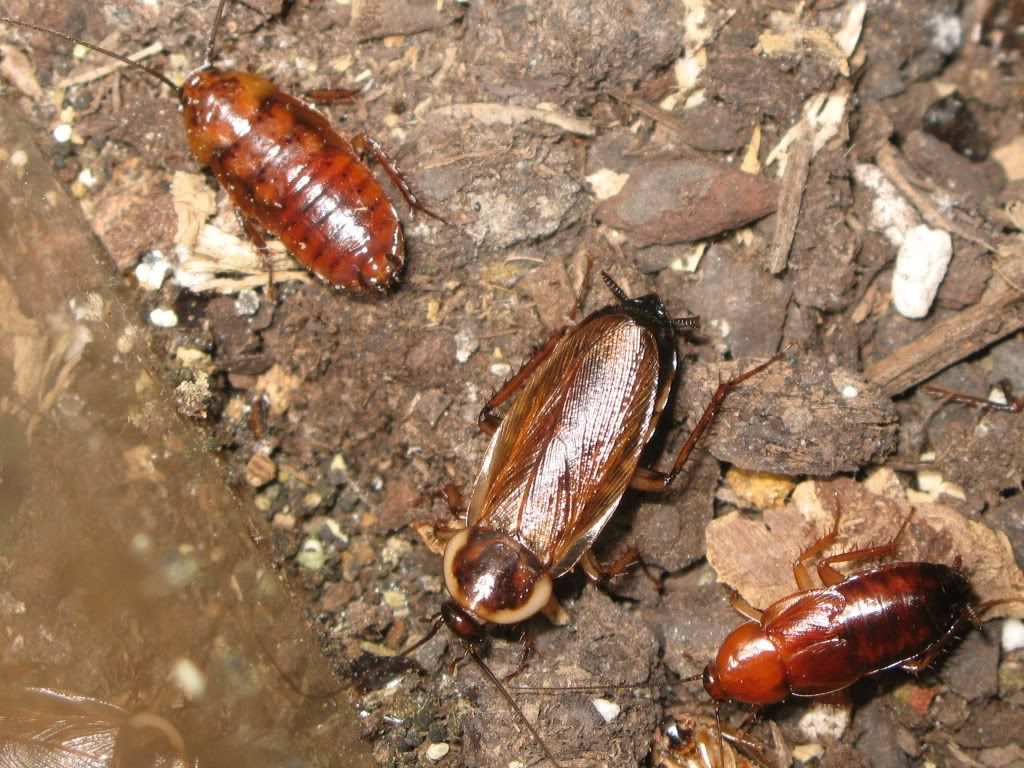



And here are 3 different females which happened to be together for a good photo. There is still another kind of orange one in there which I havn't photographed

It's very interesting to see long wings on those female P. pennsylvanica. Are most of yours like that?
Speaking of Parcoblatta, the snow is gone here and I finally went out looking for stuff the other day. I found 5 Parcoblatta nymphs (probably all pennsylvanica) about 6 feet up under the bark of dead ash trees. Makes me wonder if they overwinter there.
Speaking of Parcoblatta, the snow is gone here and I finally went out looking for stuff the other day. I found 5 Parcoblatta nymphs (probably all pennsylvanica) about 6 feet up under the bark of dead ash trees. Makes me wonder if they overwinter there.
Last edited by a moderator:
vfox
Blatta
Those look too big to be P. virginica females, do think they are P. lata or Parcoblatta americana? My female P. virginica are dinky, just around 3/8 of an inch...much much smaller than my P. pennsylvanica females which are over 3/4 of an inch.
I'm curious how well the hatching will go, I'm still waiting on my 8-10 ooths to pop.
I'm curious how well the hatching will go, I'm still waiting on my 8-10 ooths to pop.

